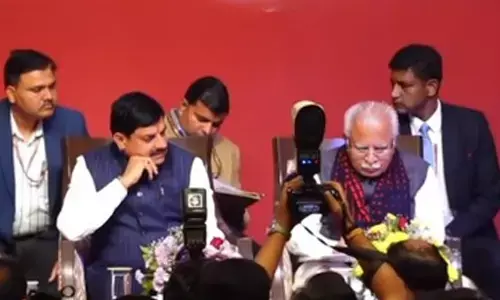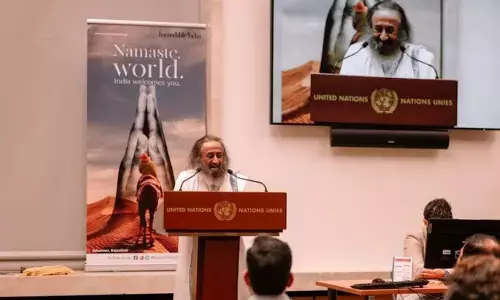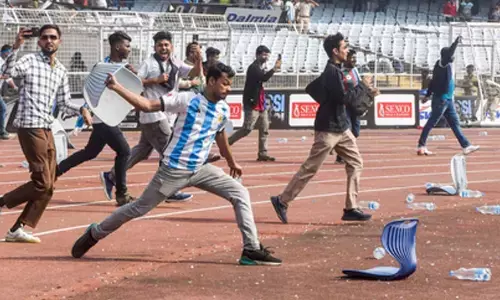India’s quest to reach beyond the horizon

Nation’s space dreams had a lift-off on Tuesday as Prime Minister Narendra Modi during a visit to Vikram Sarabhai Space Centre (VSSC) in Thiruvananthapuram unveiled the four names of Vyomanauts (astronauts) and presented wings to them for Gaganyaan mission i.e., India’s maiden manned space mission for which extensive preparations are underway across various ISRO centres. India’s exhilaration was thus truly spelt out by the PM: “It was a very special moment for me to hand over wings to the four Indian astronaut-designates. They reflect the hopes, aspirations and optimism of 140 crore Indians.”
The fabulous four comprising Group Captain Prasanth Balakrishnan Nair, Group Captain Ajit Krishnan, Group Captain Angad Pratap and Wing Commander Subhanshu Shukla is already undergoing extensive training as part of the human space flight mission in various modules at ISRO centres, besides pursuing MTech at IIS, Bengaluru. Incidentally, they had their initial training in Russia at Yuri Gagarin Cosmonaut Training Center at Star City near Moscow. This is where Rakesh Sharmatrained to fly aboard Soyuz T-11 on 3 April 1984, becoming India’s pioneer in space travel – he spent 21 days and 40 minutes in space.
India’s Vyomanauts will embark on a three-day mission to Low Earth Orbit at an altitude of 400 km before safely returning them to Earth. When they land safely in Indian sea waters there will be a huge splash, making India the fourth country to send a human into space, after the Soviet Union, the US, and China. It needs mention that ISRO just four months ago paved way for the return of astronauts. ISRO’s Flight Test Vehicle Abort Mission-1 (TV-D1), a single stage rocket,demonstrated the successful functioning of its Crew Escape System.
The Gaganyaan mission expected to cost around Rs 10,000 crore will not only showcase India’s space technological prowess but will give a big thrust to private sector participation, too. The mission is said to involve four major companies, including Pushpak Aerospace and Defence, KCP Infra Limited, Larsen & Toubro, and Tata Elxsi. India already has many space startups. After Mission Prarambh in November 2022, when India’s first space startup, Hyderabad-based Skyroot’s ‘Vikram S’ soared into the sky, as many as 100 spacetech startups are registered with the Indian Space Research Organisation. Brought under the GST regime, they have raised $233 million venture capital so far.Another significance of Gaganyaan is that Vyommitra, a female-looking humanoid robot, will also ride the crewed orbital spacecraft. First unveiled on 22 January 2020, it is being developed to undertake uncrewed experimental Gaganyaan missions prior to the crewed spaceflight missions. Unlike other space faring nations, India will not send animals to space, and hence the novel initiative. Helping India’s economic growth, Gaganyaan will catalyse development and research in cutting-edge technologies and materials and for scientific discovery, and boost employment opportunities in the aerospace industry. Nation pins its hopes on ISRO to pull through the complex and arduous stage of training the pilots for the mission, overcome technical glitches and potential delays to achieve successful return of our Vyomanauts - and Vyommitra, too.
Gaganyaan will be India’s first take-off to ultimately setting up its space station. Now, space is the limit to our dreams. ISRO can be counted upon to step up interplanetary missions such as the Venus Orbiter Mission and the Mars Lander. Space mission does not come cheap. A lunar sample return mission, to collect and bring samples in lunar South Pole, is in the plans. Indian Space Policy brought out in April 2023 aims at advanced space technologies, fostering a globally competitive space ecosystem in India.Atmanirbhar Bharat and Make in India in space sector can be said to be on the desired trajectory.
















